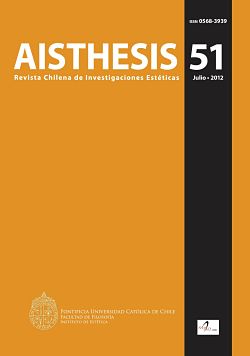Chimbote in El zorro de arriba y el zorro de abajo by José María Arguedas: in between the Urban and Rural Society
Main Article Content
Abstract
The article focuses on the representation of Chimbote in the novel El zorro de arriba y el zorro de abajo by Peruvian writer José María Arguedas, who portrays the city as a heterogeneous space in tension where expressions of the urban and rural societies coexist. Additionally, an in-depth analysis of Arguedas’ particular vision of modernity, modernization and culture is provided.
Downloads
Article Details

This work is licensed under a Creative Commons Attribution-NonCommercial-ShareAlike 4.0 International License.
All contents of this electronic edition are distributed under the Creative Commons license of "Attribución-shareAlike 4.0 Internacional" (CC-BY-SA). Any total or partial reproduction of the material must mention its origin.
The rights of academic works published in this publication belong to their authors., who grant to AISTHESIS: Revista Chilena de Investigaciones Estéticas the license for its use. The management of the permits and the authorization of the publication of the images (or of any material) that contains copyright and its consequent rights of reproduction in this publication is the sole responsibility of the authors of the articles
